A multiomic atlas identifies a treatment-resistant, bone marrow progenitor-like cell population in T cell acute lymphoblastic leukemia
- PMID: 39587259
- PMCID: PMC11779640
- DOI: 10.1038/s43018-024-00863-5
A multiomic atlas identifies a treatment-resistant, bone marrow progenitor-like cell population in T cell acute lymphoblastic leukemia
Abstract
Refractoriness to initial chemotherapy and relapse after remission are the main obstacles to curing T cell acute lymphoblastic leukemia (T-ALL). While tumor heterogeneity has been implicated in treatment failure, the cellular and genetic factors contributing to resistance and relapse remain unknown. Here we linked tumor subpopulations with clinical outcome, created an atlas of healthy pediatric hematopoiesis and applied single-cell multiomic analysis to a diverse cohort of 40 T-ALL cases. We identified a bone marrow progenitor (BMP)-like leukemia subpopulation associated with treatment failure and poor overall survival. The single-cell-derived molecular signature of BMP-like blasts predicted poor outcome across multiple subtypes of T-ALL and revealed that NOTCH1 mutations additively drive T-ALL blasts away from the BMP-like state. Through in silico and in vitro drug screenings, we identified a therapeutic vulnerability of BMP-like blasts to apoptosis-inducing agents including venetoclax. Collectively, our study establishes multiomic signatures for rapid risk stratification and targeted treatment of high-risk T-ALL.
© 2024. The Author(s).
Conflict of interest statement
Competing interests: D.T.T. received research funding from BEAM Therapeutics and NeoImmune Tech and serves on advisory boards for BEAM Therapeutics, Janssen, Servier, Sobi and Jazz. D.T.T. has multiple patents pending on chimeric antigen receptor T cell therapy. The other authors declare no competing interests.
Figures








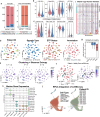
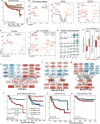
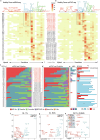



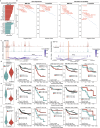

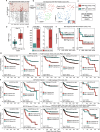

Update of
-
Identification and targeting of treatment resistant progenitor populations in T-cell Acute Lymphoblastic Leukemia.Res Sq [Preprint]. 2023 Oct 30:rs.3.rs-3487715. doi: 10.21203/rs.3.rs-3487715/v1. Res Sq. 2023. Update in: Nat Cancer. 2025 Jan;6(1):102-122. doi: 10.1038/s43018-024-00863-5. PMID: 37961674 Free PMC article. Updated. Preprint.
References
MeSH terms
Substances
Grants and funding
- U24 CA196173/CA/NCI NIH HHS/United States
- X01 HD100702/U.S. Department of Health & Human Services | National Institutes of Health (NIH)
- U10 CA18099/U.S. Department of Health & Human Services | National Institutes of Health (NIH)
- R03 CA 256550/U.S. Department of Health & Human Services | National Institutes of Health (NIH)
- K08 CA273531/CA/NCI NIH HHS/United States
- St. Baldrick's Foundation/U.S. Department of Health & Human Services | National Institutes of Health (NIH)
- F30 CA268782/CA/NCI NIH HHS/United States
- T32 GM07170/U.S. Department of Health & Human Services | National Institutes of Health (NIH)
- U10 CA180886/CA/NCI NIH HHS/United States
- U54 HL165442/HL/NHLBI NIH HHS/United States
- R01 CA193776/CA/NCI NIH HHS/United States
- R01 CA264837/CA/NCI NIH HHS/United States
- T32 GM007170/GM/NIGMS NIH HHS/United States
- R03 CA256550/CA/NCI NIH HHS/United States
- U24 CA114766/CA/NCI NIH HHS/United States
- F30 CA277965/CA/NCI NIH HHS/United States
- K08 CA286762/CA/NCI NIH HHS/United States
- U10 CA180899/CA/NCI NIH HHS/United States
- U2C CA233285/CA/NCI NIH HHS/United States
LinkOut - more resources
Full Text Sources

